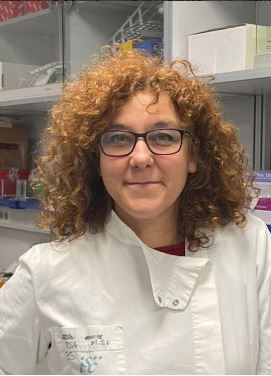SEMINARIO DE INSTITUTO
Understanding the tumor microenvironment of glioblastomas. How to turn an enemy into a friend
Ponente
Pilar Sánchez Gómez
Fecha y hora
10 de marzo 12:30
Lugar
Instituto Cajal
Abstract
Glioblastoma (GBM) is the most common and aggressive primary brain tumor. Over the last decades, all the clinical trials have failed and patients still have a dismal prognosis. This has been attributed in part to treatment limitations related to the tumor localization, but also to its infiltrative nature and to its heterogeneity (both intra and inter-tumor), which represent a substantial impediment to personalized medicine. In this seminar, I will review our latest studies, focused on understanding the complex relationship that exists between GBM cells and their tumor microenvironment. Although the brain cellular context initially hinders the appearance of tumors, later becomes an ally of GBM growth, facilitating their aggressiveness and treatment resistance. I will also discuss how we can use our results to improve therapies for GBM patients by targeting their supportive stromal cells. Finally, I will introduce some provocative ideas about the similarities between GBM and neurodegeneration.
Affiliation and short bio

Dr. Sánchez-Gómez performed her PhD studies under the supervision of Dr. Moscat (CBM), working on atypical PKCs and their role in cancer. After that, she did a postdoctoral stay with Dr. Ruiz i Altaba (NYU), where we identified hedgehog as a key factor for the regulation of neural stem cells (NSC), as well as for the growth of various types of cancer. In 2004, she joined the Valencia Univ. with a Ramón y Cajal contract, collaborating with Dr. Fariñas to study regulatory factors of adult NSCs. In 2008, she joined the ISCIII with a Senior Scientist position to perform neuro-oncology research focused on glioblastoma (GBM). During the first years as PI, her group identified DYRK1A and TMEM167A as fundamental targets in adult GBMs, as they modulate the stability of EGFR, a key receptor in such
tumors. Since 2010, Dr. Sánchez-Gómez has worked closely with clinicians at Hospital 12 de Octubre, publishing together several articles and collaborating in different translational projects. Moreover, the group has established a panel of primary cell lines and xenografts, derived from patient samples, which are being used in their own projects, but also for collaborations with pharmaceutical companies interested in the preclinical test of different compounds and nutritional supplements. In recent years, their interest has turned into understanding the role of the tumor microenvironment in gliomas, as well as in the spatial regulation of cancer and stromal cells in these tumors, with a special focus in the peri- surgical zone and in the local delivery of anti-tumor compounds.
Related publications with the topic
Segura-Collar B, Garranzo-Asensio M, Herranz B, Hernández-SanMiguel E, Cejalvo T, Casas BS, Matheu A, Pérez-Núñez Á, Sepúlveda-Sánchez JM, Hernández-Laín A, Palma V, Gargini R, Sánchez-Gómez P. Tumor-derived pericytes driven by EGFR mutations govern the vascular and immune microenvironment of gliomas. Cancer Res. 2021 Feb 16:canres.3558.2020 (IF: 12.701) (D1)
Segura-Collar B, Mata-Martínez P, Hernández-Laín A, Sánchez-Gómez P*, Gargini R*. Blood-Brain Barrier Disruption: A Common Driver of Central Nervous
System Diseases. The Neuroscientist. 2021 Jan 15:1073858420985838. (IF: 7.519) (D1) (* co-corresponding) Gargini R, Segura-Collar B, Sánchez-Gómez P. Cellular plasticity and tumor microenvironment in gliomas: the struggle to hit a moving target. (2020) Cancers. 12(6):E1622. (IF: 6.126) (Q1)
Gargini R*, Segura-Collar B*, Hernández-SanMiguel E, Garcia-Escudero V, Romero-Bravo A, Herránz B, Núñez FJ, Cantero D, García-Pérez D, Ayuso-Sacido A, Seoane J, Sepúlveda-Sánchez JM, Hernández-Laín A, Castro MG, García-Escudero R, Ávila J* and Sánchez-Gómez P*. (* Co-corresponding author) (* Co-1st author) The IDH-Tau-EGFR triad defines the neovascular landscape of diffuse gliomas by controlling mesenchymal differentiation. (2020) Sci. Transl.
Med.12 (527). (IF: 16.304) (D1)
